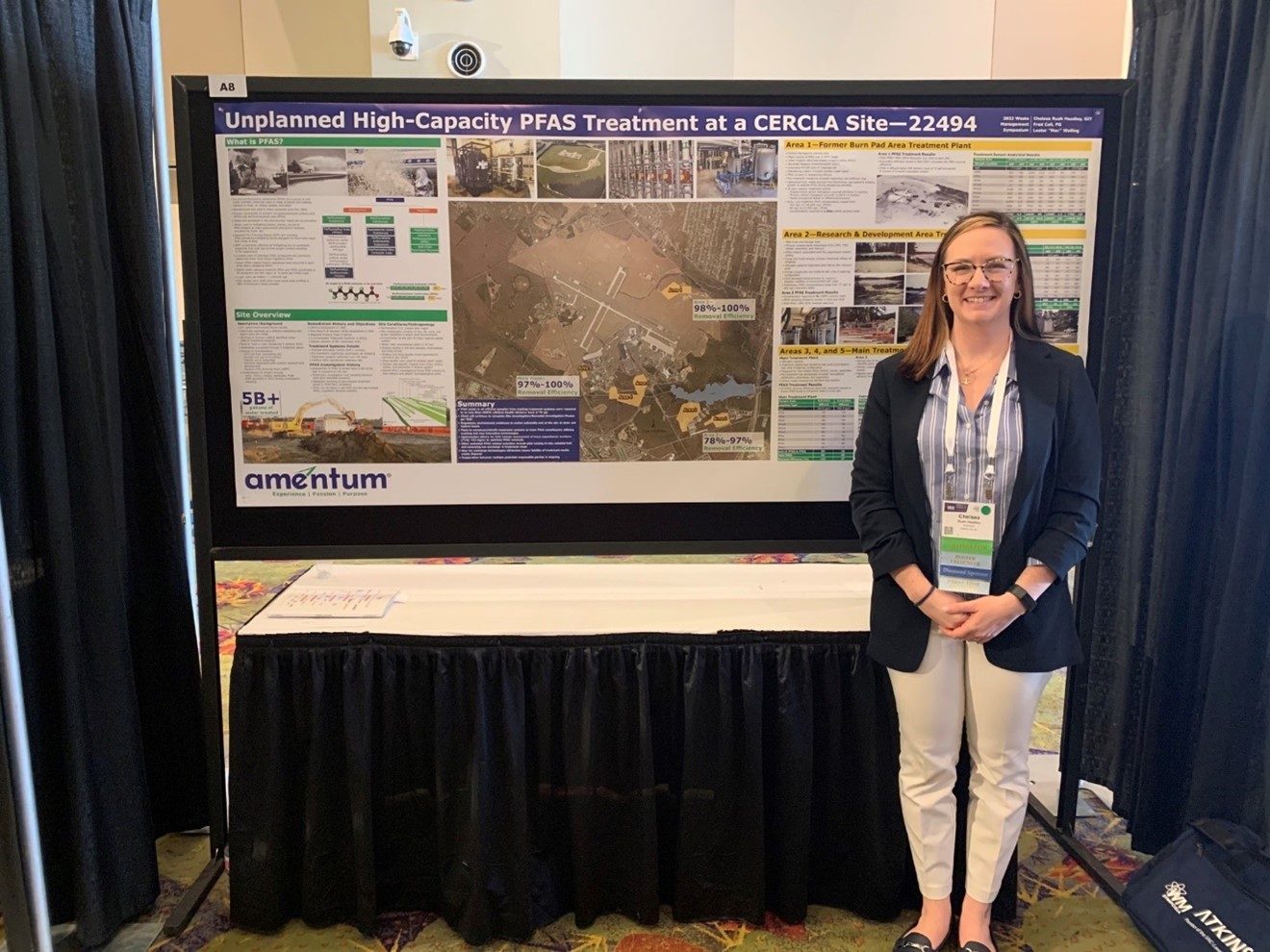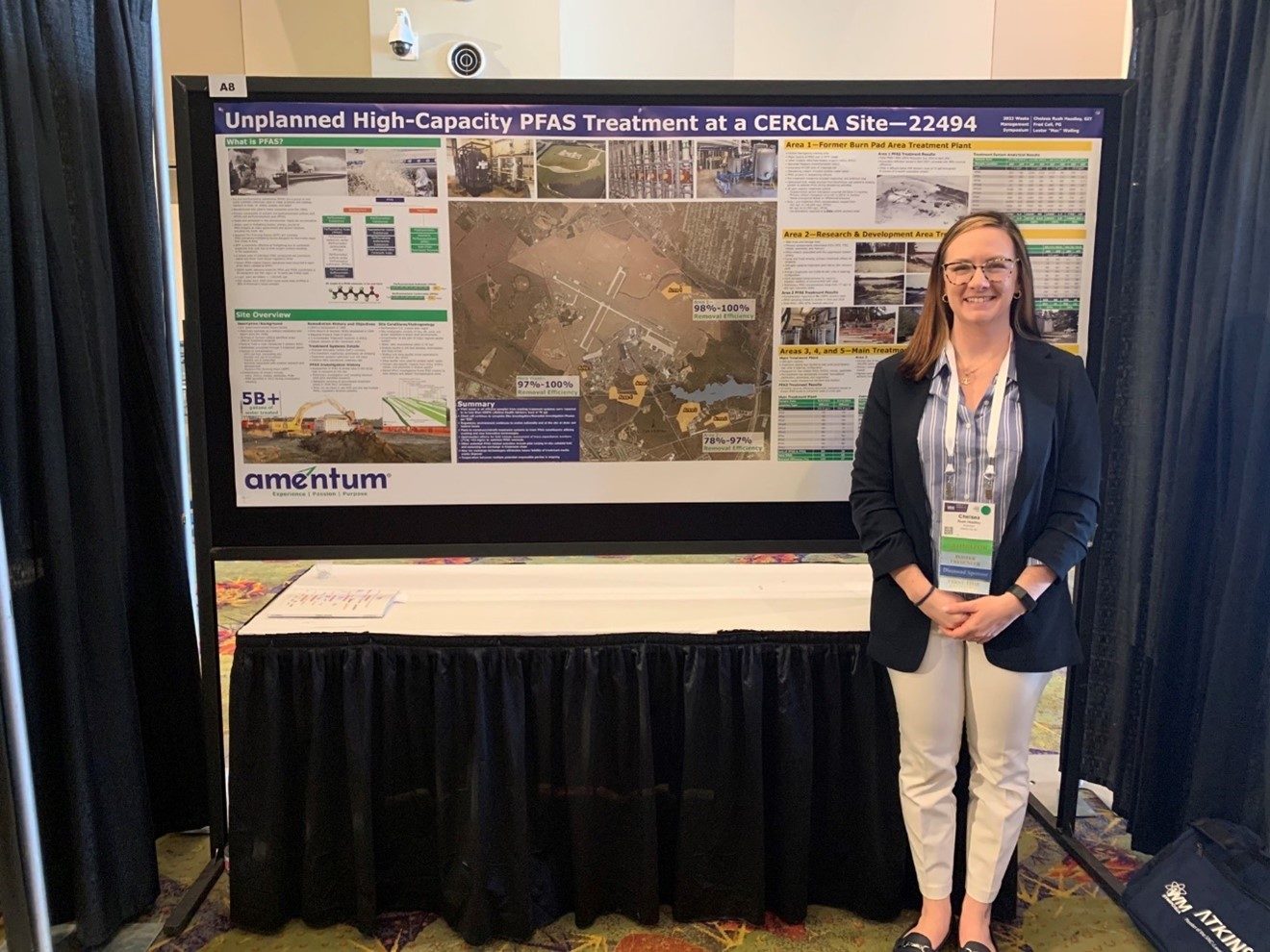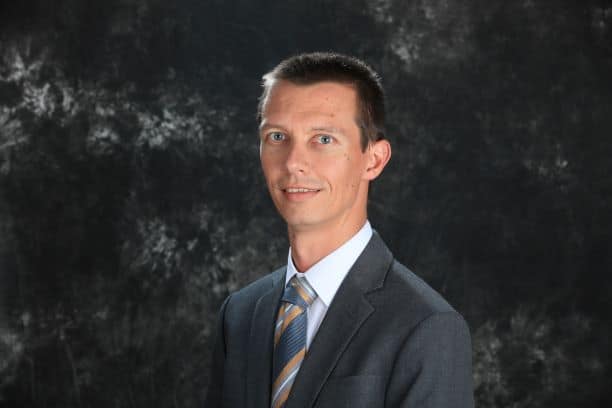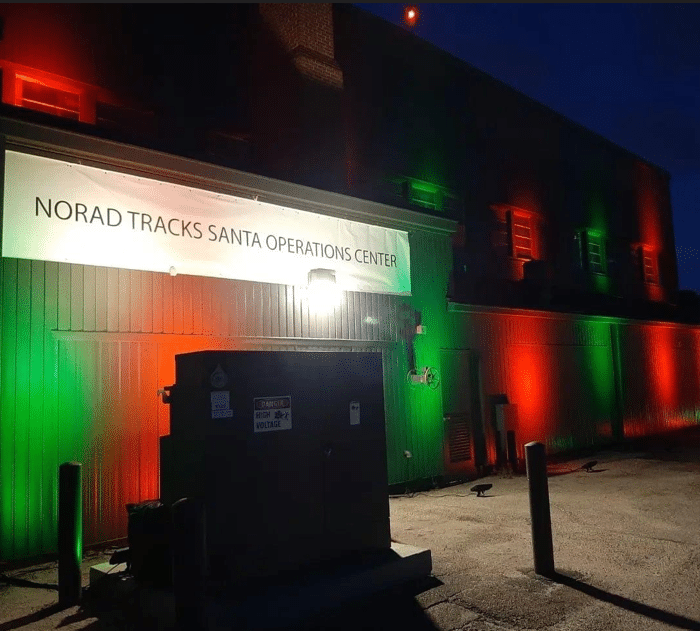Amentum’s Chelsea Rush Headley, Fred Coll, and Mac Walling recently authored a white paper on PFAS treatment evaluations that was presented and published by the Waste Management Symposia 2022 Conference. PFAS, or per-and polyfluoroalkyl substances (PFAS), are a group of chemicals used to make fluoropolymer coatings and products that resist heat, oil, stains, grease, and water. Many PFAS are a concern because they don’t break down in the environment, can move through soils and contaminate drinking water sources, and bioaccumulate in fish and wildlife.
In the paper, the authors discuss the implementation of long-term remedial actions at a large Comprehensive Environmental Response, Compensation, and Liability Act of 1980 (CERCLA) Site impacted by a wide-ranging suite of contaminants. The site had been a military facility and an airport all the way back to the 1930s with documented extensive use of Aqueous Film Forming Foam (AFFF), a probable source for most of the site’s PFAS contamination.
After studying records and data from areas of concern at the site, which use a pump and treat remedy employing granular activated carbon (GAC) units as the primary treatment for a wide-ranging suite of comingled organic and inorganic contaminants, they discovered that the treatment plant designs, which did not have PFAS considerations at the time of design and construction, demonstrated an estimated PFAS removal efficiency above 95% based on the sampling results from a preliminary investigation.
The authors concluded that it was evident that PFAS treatment is an additional benefit of the various GAC media deployed in the conventional wastewater systems designed to treat other co-contaminants at the site. At most sites, particularly aviation sites with AFFF impacts, it’s likely for PFAS contamination to coexist with other classic contaminants, and sites already responsible for remediation of other contaminants can optimize those existing treatment systems to address PFAS. And, the unplanned efficacy of PFAS removal during remediation of alternate contaminants supports the continued application of specialized GAC for the high-volume removal of PFAS constituents from wastewater.
For complete information, read the paper here.
Amentum combines regulatory, engineering, field operations, and waste processing and disposal experience to offer a comprehensive PFAS solution. We work with government agencies, companies, non-profits and more. For more information on how we can help, please reach out to us.










